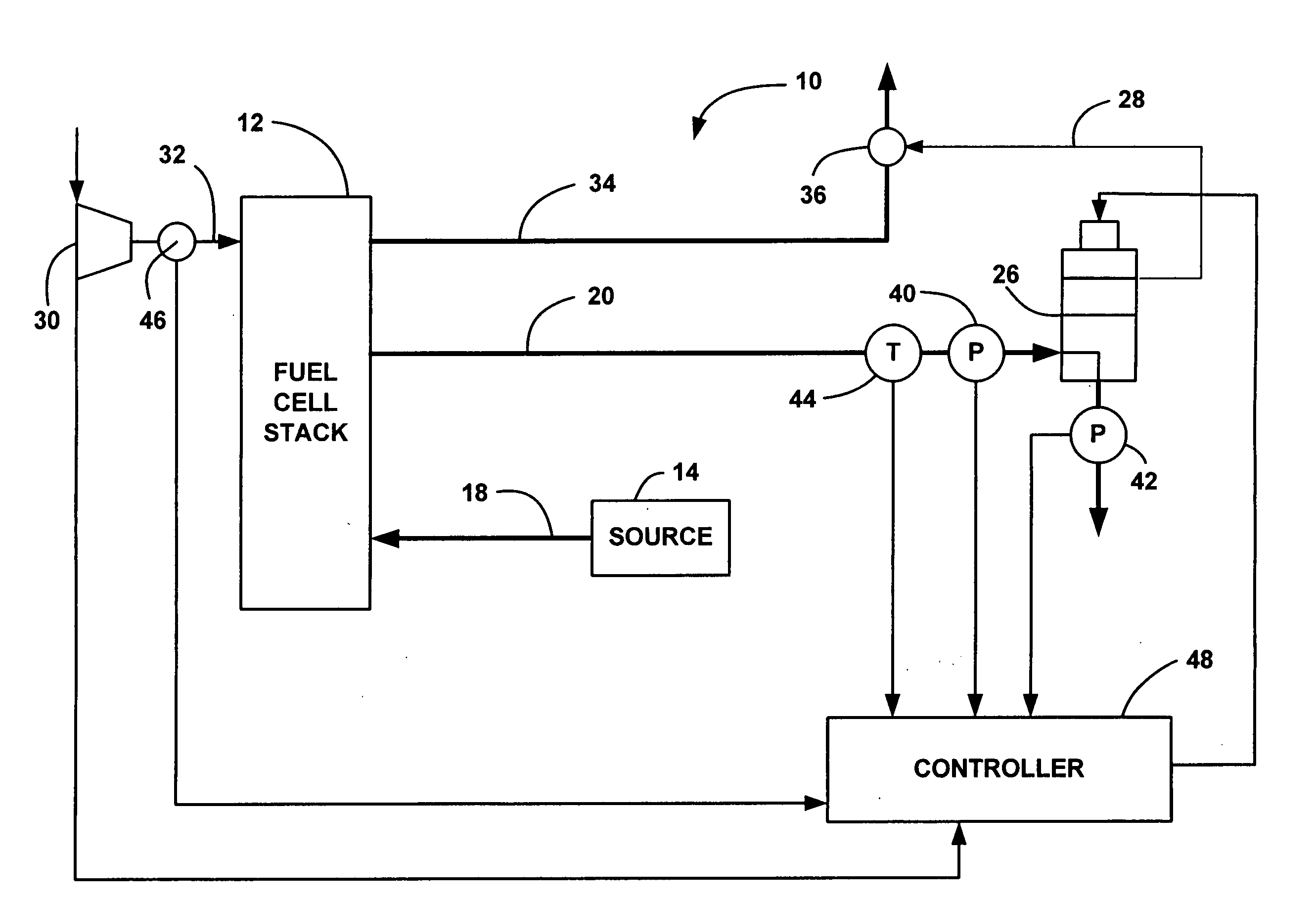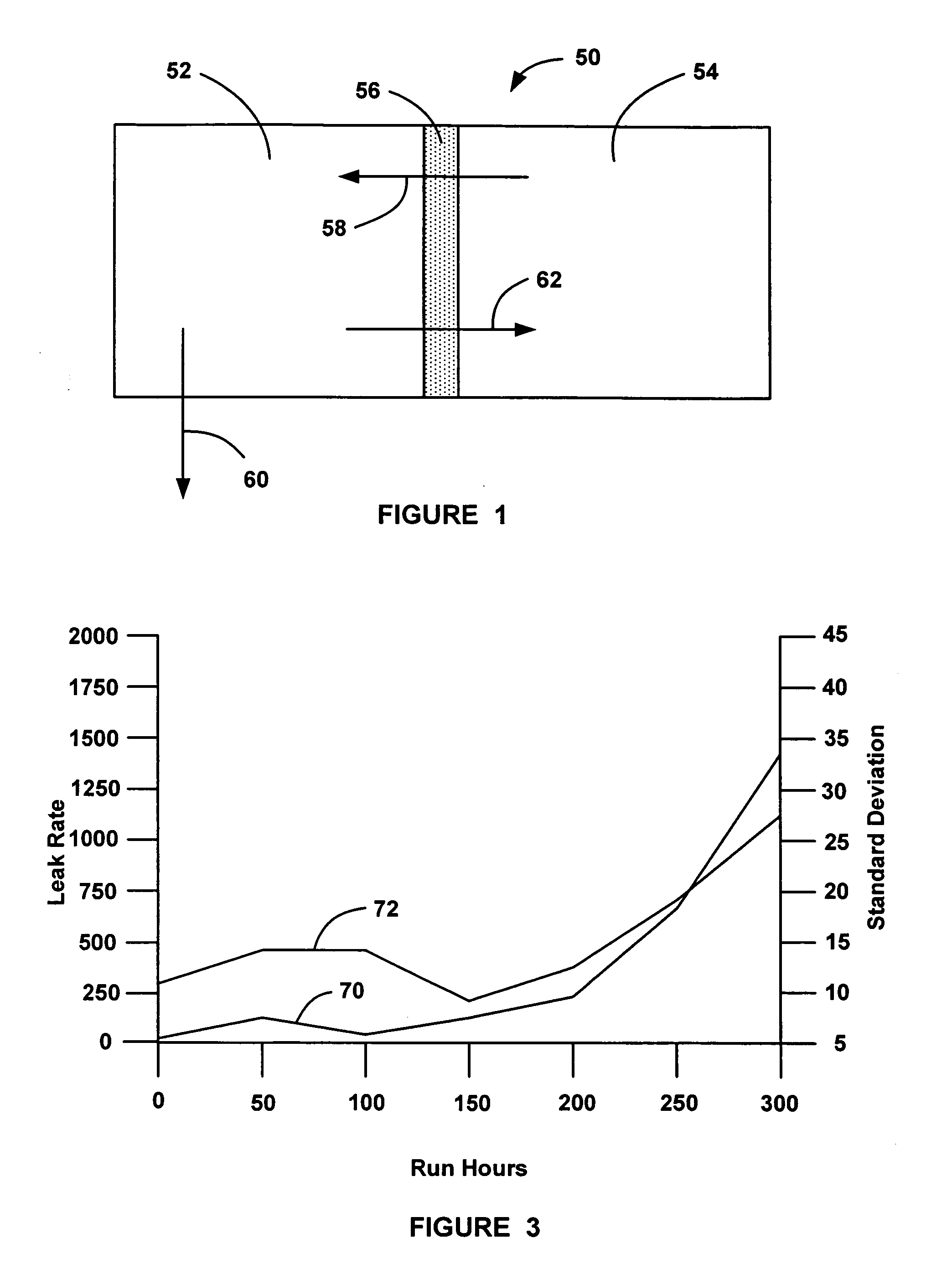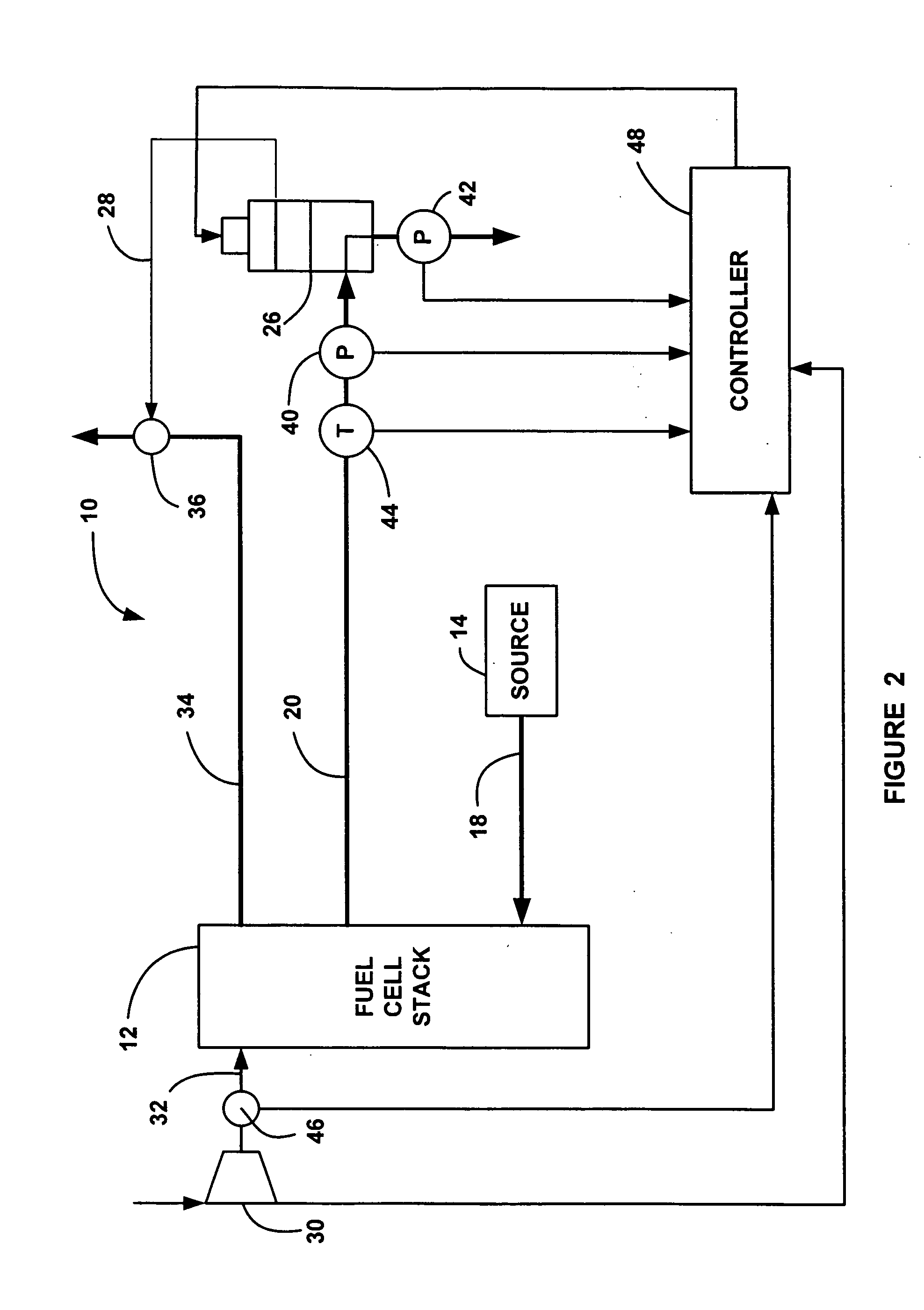Online detection of stack crossover rate for adaptive hydrogen bleed strategy
a technology of hydrogen bleed and stack crossover, applied in the field of online detection of stack crossover rate for adaptive hydrogen bleed strategy, can solve the problems of fuel cell stack instability, failure of fuel cell, and relatively high cost of manufactur
- Summary
- Abstract
- Description
- Claims
- Application Information
AI Technical Summary
Problems solved by technology
Method used
Image
Examples
Embodiment Construction
[0016]The following discussion of the embodiments of the invention directed to a process for determining when to provide an anode exhaust gas bleed in a fuel cell system over the life of a fuel cell stack is merely exemplary in nature, and is in no way intended to limit the invention or its applications or uses.
[0017]FIG. 1 is a representation of a fuel cell 50 including an anode side 52, a cathode side 54 and a membrane 56 therebetween. Line 58 represents the nitrogen cross-over flow from the cathode side 54 to the anode side 52, line 60 represents the flow from the anode side 52 during an anode exhaust gas bleed and line 62 represents the permeation of the nitrogen from the anode side 52 through pinholes in the membrane 56. Because the internal permeation is through pinholes in the membrane, the flow of nitrogen from the anode side 52 to the cathode side 54 when the stack 50 is new is very low, and thus the anode exhaust gas bleed model typically does not consider this permeation ...
PUM
 Login to View More
Login to View More Abstract
Description
Claims
Application Information
 Login to View More
Login to View More - R&D
- Intellectual Property
- Life Sciences
- Materials
- Tech Scout
- Unparalleled Data Quality
- Higher Quality Content
- 60% Fewer Hallucinations
Browse by: Latest US Patents, China's latest patents, Technical Efficacy Thesaurus, Application Domain, Technology Topic, Popular Technical Reports.
© 2025 PatSnap. All rights reserved.Legal|Privacy policy|Modern Slavery Act Transparency Statement|Sitemap|About US| Contact US: help@patsnap.com



